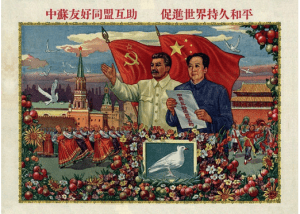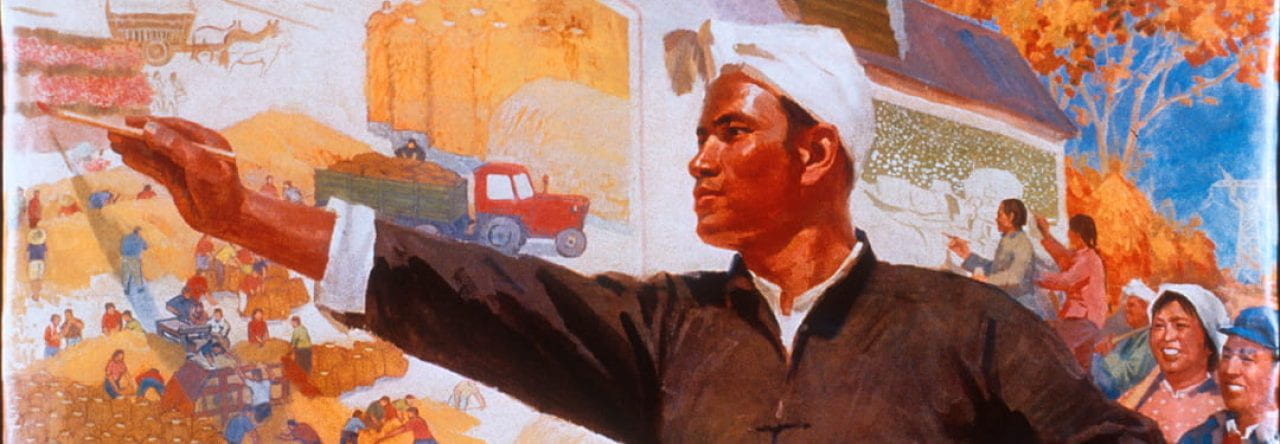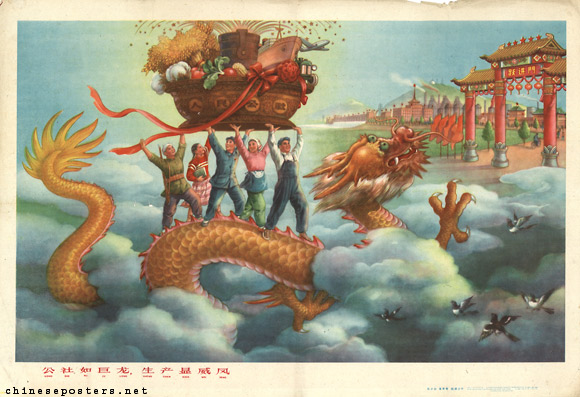The Political Poster in 20th century China takes huge tasks in depicting Chinese Political Leaders, forming the cult of the leaders and helping conveying the political ideas.Political posters can show an image of powerful political leaders, and being the important tool and modern technologies to render a subconscious impact of personal cult. The Political Posters could also convey the political ideas through depicting character’s emotion, changing their size and the background color. In China, Mao’s images in the Political posters and propagandas are the example of using the posters not only to form a personal cult of Mao, but also to convey China’s relationship with the Soviet Union and other countries. Such as Li Binghong’s The Sino-Soviet Allliance for Friendship and Mutual Assistance Promotes Enduring World Peace. In this painting, it contains both Chinese and Soviet Union’s leaders ‘ images to show the inviolability of the Soviet-Chinese friendship. Stalin’s image was at the side of Mao, just as the teacher of Mao, which helped build the personal cult of Stalin in Chinese masses.
 Li Binghong 黎冰鸿. Ca. 1950. The Sino-SovietAlliance for Friendship and
Li Binghong 黎冰鸿. Ca. 1950. The Sino-SovietAlliance for Friendship and
Mutual Assistance Promotes Enduring World Peace (Zhong Su youhao tongmeng huzhu cujin shijie chijiu heping 中苏友好同盟互助促进世界持久和平) [Source: Chinese Posters Foundation 2019]
Based on the poster I described, we can see that it is important to use different posters and propagandas that include Mao’s image to analyze what political ideas they try to convey and how the details of the poster could help audiences to understand those informations. Hence, In my exhibition, I will introduce five different political posters that include Mao’s images, analyzing these posters through color, character position, size of character and emotional aspects to show how the Chinese government in the 20th century used propaganda to build personal cult of Mao and convey political ideas & international relationships.
Bibliography:
1:Polina, Komarovskaya.The Political Poster and Its Role in the Personality cult of Mao Zedong, Accessed 5/5/2022, OE-57-7.pdf (oriens-extremus.org).
2:Benewick, Robert.”Icons of Power: Mao Zedong and the Cultural Revolution.” From Picturing Power in the People’s Republic of China:Posters of the Cultural Revolution. Harriet Evans and Stephanie Donald edited. Rowman & Littelefield Publishers, New York, Oxford. 1999.
3:Yuzhu Fu, and Cheng Yan. The Way of Visual Persuasion in Chinese Propaganda Poster. Advances in Social Science, Education and Humanities Research, volume 123. Atlantis Press, 2017.
4:Sprouse, Sarah. “The Aesthetics of Revolution:Chinese Propaganda and the Anthony E.Clark Chinese Poster Collection.”Chinese Art Posters Documents. Whitworth University. 2017. The Aesthetics of Revolution: Chinese Propaganda and the Anthony E. Clark Chinese Poster Collection (whitworth.edu)


